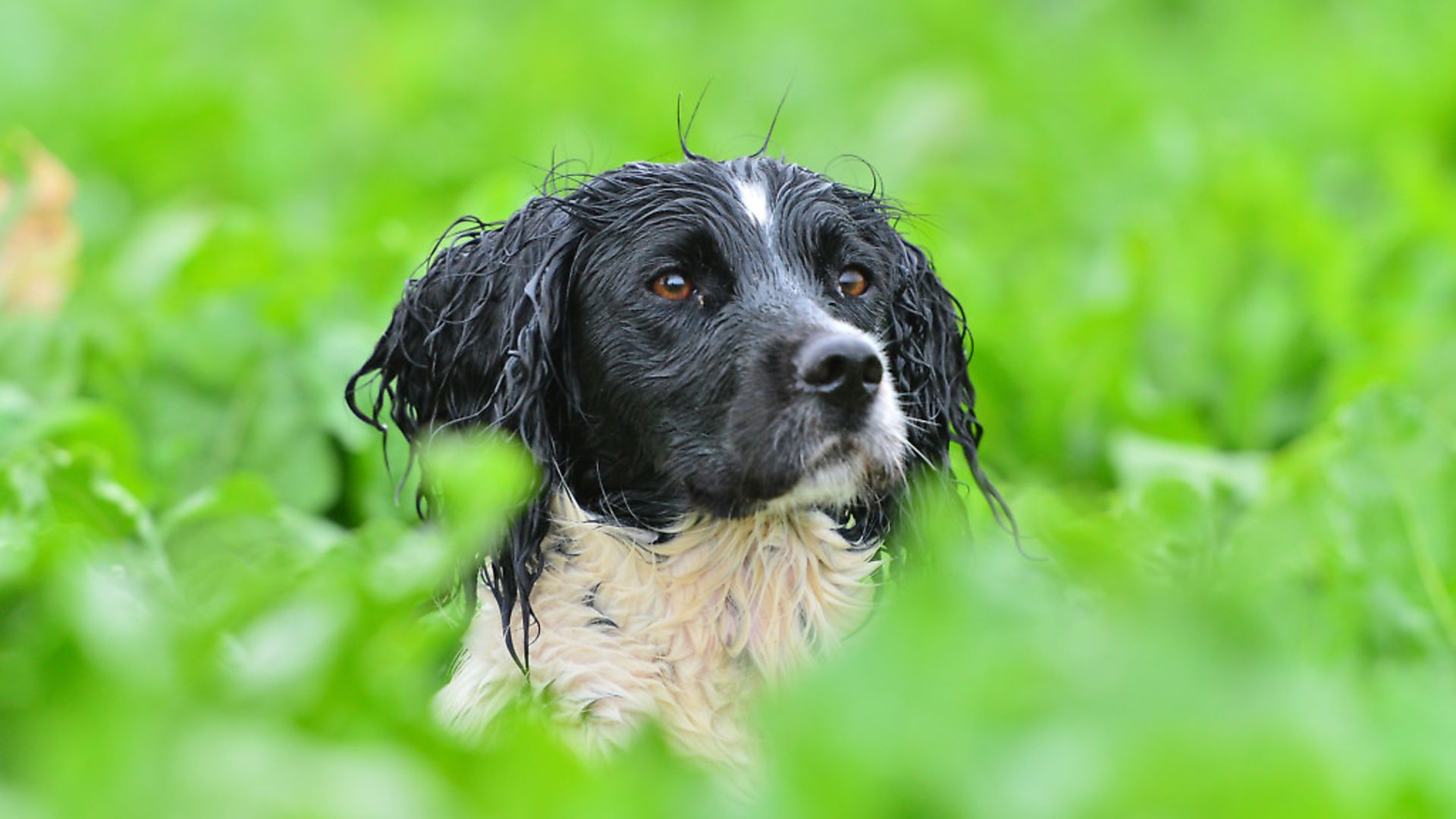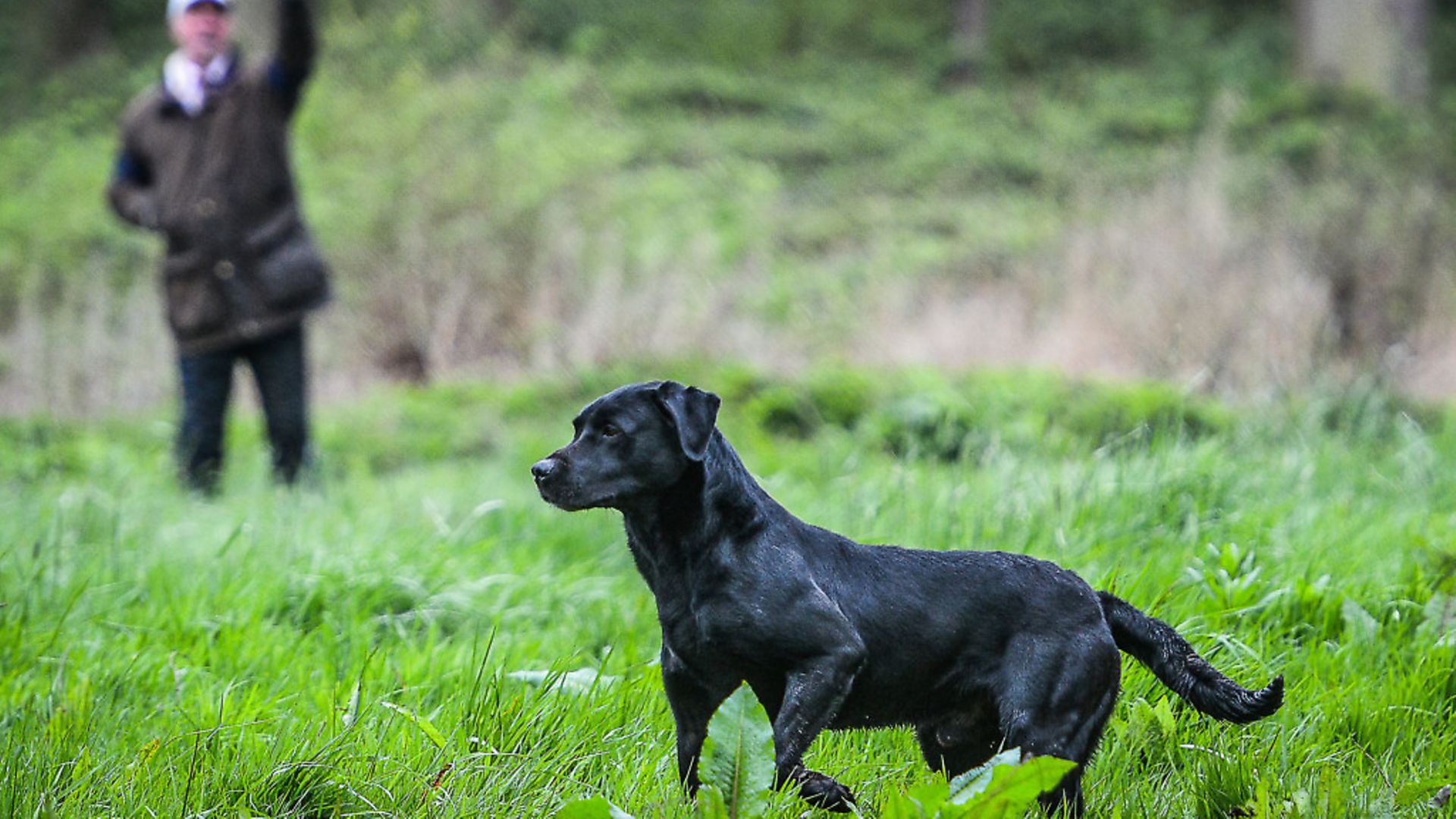Perfect the stop whistle command using the “railway track” method... gundog trainer Howard Kirby of Mullenscote Gundogs teaches us how
 credit: Archant
credit: Archant
In last month’s issue, we started to look at some techniques for teaching a dog to stop on the whistle. This means that we have to teach the dog to respond to commands at distance. We’ve already discussed it but I’m going to labour the point... this ‘Sit’ or drop to the whistle is going to be massively important if we are to control a gundog in the heat of battle.
Repeating myself for the second time (and I’ve only got to the second paragraph!), a dog’s willingness to stop on the whistle will be based on well-delivered instruction that conditions the dog to understand that the command is compulsory. Best results are always obtained where the dog understands that the Stop whistle brings him reward. For dogs that retrieve, this partnership will be fairly straightforward to build and maintain as throughout his career working with you this rewarding interaction will be regularly reinforced. The reinforcement will come each time you stop him on the whistle and direct him onto game.
I’m going to stick my neck out and say that with the non-retrieving pointing and setting breeds this reward for stopping doesn’t come so obviously, unless you include avoiding correction?
 credit: Archant
credit: Archant
Make ‘sit’ a dirty word
On a daily basis, look for opportunities to use the Sit/Stop whistle by simply blowing the whistle instead of saying the word sit. In fact, try to use the whistle instead of a voice command to communicate with your dog as much as possible. Whistle commands that are obeyed and rewarded will continue to condition the dog to respond appropriately. Assuming, of course, you’re practising perfectly.
The railway track
Here’s a nice simple exercise for you to get your head around! I call this exercise ‘the railway track’. Imagine your dog is a train and it’s travelling along a railway track, gosh this is exciting already! Now imagine you need to stop the train, quickly. What’s the best way to do it? Of course, you’re going to stand in the middle of the track and flag it down, effectively blocking the train’s path. Don’t try this at home boys and girls as it’s fraught with danger, we’re just pretending.
Sit your dog up and walk about 30 big paces away from it, then drop a dummy as a mark for the dog to see. Imagine a railway running in a straight line from the dummy to the dog. Walk back down the line about five big paces (but you may need to be closer to the dummy if you think the dog is going to ignore your commands), and then step sideways off the line. Now, turn your body slightly towards the dummy, deliberately take a good hard two second stare at the dummy before looking at the dog and telling him to fetch. As he gallops towards the dummy step out in front of him, blowing the Stop whistle as you do. In most cases, this will bring the dog to an abrupt sit. Instantly reward with the word ‘good’, take a step out of the way and send him again to complete the retrieve (see diagram 2).
Repeat the exercise a second time exactly as before; the dog should be just that bit sharper this time as he will be expecting to be stopped.
Now we set the exercise up in exactly the same way only this time make no attempt to stop the dog. Observe and assess the dog’s reaction to this third retrieve as it will be important as we move forward. Some will react immediately and fly past you to the dummy. If you watch carefully, you’ll see him check you out with the slightest of glances to see if you are going to stop him. Others might need a second Fetch command and some will move with caution, assuming you’re going to stop them. It is for this reason that we allow the dog to complete the retrieve, without stopping it for maybe a couple more retrieves with our aim being to finish on a high – ideally putting the dog away straight after this exercise.
It’s important to understand that if we are not accurate in our delivery of this exercise, we risk making dogs ‘sticky’ on their outrun. Our aim is to leave the dog in a mindset where he is absolutely clear about all the commands we give. This will lead to a confidence in the dog that will maximise its performance.
Progression
There are several variations of this exercise, but let’s consider how we can gradually build the degree of difficulty. As always, running before you can walk will lead to tears; don’t set the bar too high and don’t set your dog up to fail. The simple way that we make this exercise more difficult is to take a couple more paces off the track. The further from the track we are, the more difficult it becomes to influence the dog’s behaviour (see diagram 3). In the future, we want to be considerable distances from the dog, but it’s important we remain in control. By standing in the correct place in the early phases of this exercise, we are able to influence the dog’s behaviour with our presence.
I’m going to keep repeating that it will be the clever conditioning of the dog to understand that high rewards are directly linked to stopping on the whistle.
Stating the obvious, this exercise puts the handler in a position to almost guarantee that the dog will stop, clearly this is because we are stood directly in front of it. Over a period of a couple of weeks, I would like to have schooled the dog to stop on the whistle on its outrun. Which means, of course, the handler is now in the polar opposite position... behind the dog, meaning we are no longer able to influence the dog with our presence and have surrendered all physical control (see diagram 3).
So, there is a layering up process on the journey from being directly in front to standing behind. Study the diagrams; I hope they will assist you in understanding that how and where you position yourself can make such a difference in many dog training exercises.
One important element that we haven’t yet covered is that before you look to use this I have assumed that you have done some of the many basic elements of training including sitting to the whistle. We cannot expect the dog to succeed at this exercise without any preparatory work.
On the subject of things not going to plan, we should prepare for the dog not to understand what is being asked of it. This is likely to be on the very first time you try the exercise. Some dogs, because you have encouraged them to fetch combined with a rush of enthusiasm, will ignore your attempts to stop them and try to dodge past you.
If you know that your dog is likely to do this, you can start by setting up this exercise against a fence line. By doing this, you massively reduce the chances of the dog running past you.
Checklist
So, let’s be prepared. Here is a quick checklist to consider each time you try this exercise:
* Does the dog understand the Stop whistle at close range?
* Have you found a suitable fence to work along?
* Are you are close enough to the dummy to block the dog’s path?
* Is the whistle in your mouth before you give the ‘Fetch’ command?
* And don’t wait until it’s too late before you try to stop the dog!
What to do if it goes wrong
Let’s assume you’ve got it all wrong and the dog is trying to get past you. This is where you need to ‘up your game’ and ensure you make it very clear to the dog that it was a mistake to ignore you.
Prevent the dog from reaching the dummy, quickly step on the dummy and pick it up. Growl at him before quietly slipping a lead over his head, take him back to the spot where you initiated the original stop, and blow the Stop whistle.
Now leave him in the sit to think about it for 10 seconds before starting the exercise again from the beginning. Only do the exercise twice before allowing the dog to run straight past you and make the retrieve. Repeat this twice. This is really important as your dog will quickly start to anticipate that you will stop him on the run out and will either be reluctant to move at all or will creep forward, expecting to be blown down. This could lead to later problems, so by only doing two and allowing him to run straight through you will ensure that the dog has a thorough understanding of what’s been asked of him. So, there’s another one of the many techniques that you can put into your toolbox. The Stop whistle is such an important behaviour for us to teach our dogs. As always, have fun with your dogs and Keeeep Training!